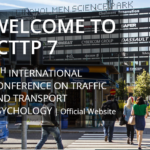
VTI – Swedish National Road and Transport Research Institute in collaboration with SAFER Vehicle and Traffic Safety Center at Chalmers organised with great success the 7th International Conference on Traffic and Transport Psychology (ICTTP), which was held in Gothenburg, Sweden, on 23-25 August 2022. The Conference philosophy was Taking the Vision Zero Initiative into a New Decade and the focus was on the role that traffic and transport psychology can play in reaching the ethical standpoint that no-one should die or be seriously injured in traffic by providing a common ground for future interdisciplinary research. ![]() NTUA actively contributed with the following presentation :
NTUA actively contributed with the following presentation :
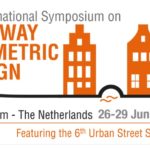
The 6th International Symposium for Highway Geometric Design (ISHGD) took place with great success in Amsterdam on 29 June 2022. The Symposium managed to encourage the continuous improvement of highway geometric design and focused on the latest breakthrough practices relating to highway engineering in their different life phases, including daily operational effects and safe highway designs. ![]() NTUA actively contributed with the following presentations and papers :
NTUA actively contributed with the following presentations and papers :

 Development and implementation of a methodology for the economic appraisal of road infrastructure safety schemes (Best Paper Award)
Development and implementation of a methodology for the economic appraisal of road infrastructure safety schemes (Best Paper Award)
 Superelevation Transition Assessment on Rural Roads with Reverse Consecutive Horizontal Curves
Superelevation Transition Assessment on Rural Roads with Reverse Consecutive Horizontal Curves
 Impact of Road and Traffic Characteristics on Driver Behaviour and Safety Using Data from Smartphone
Impact of Road and Traffic Characteristics on Driver Behaviour and Safety Using Data from Smartphone
 Urban Street Network Upgrade for the New Intercity Bus Terminal in the City of Athens
Urban Street Network Upgrade for the New Intercity Bus Terminal in the City of Athens
 Pavement Grooving Pattern Direction Investigation as a Countermeasure of Hydroplaning
Pavement Grooving Pattern Direction Investigation as a Countermeasure of Hydroplaning
 Passenger Cars Safety Assessment on Interchange Ramps
Passenger Cars Safety Assessment on Interchange Ramps
 Passing Sight Distance -Regulations Vs Reality
Passing Sight Distance -Regulations Vs Reality
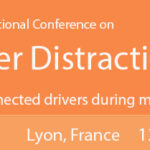
The French Institute of Science and Technology for Transport, Development and Networks (IFSTTAR) organised with great success the 7th International Conference on Driver Distraction and Inattention (DDI2021) under the theme “Disconnected drivers during manual, assisted, and automated driving”, which was held online, on 18-20 October. The Conference topics included theory, measurement, effects, crash risks, and prevention/mitigation related to driver distraction and inattention. Moreover, DDI2021 focused on the driver/occupant status. ![]() NTUA actively contributed with the following presentation:
NTUA actively contributed with the following presentation:
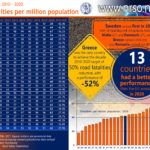
According to the EU road fatalities infographic of the NTUA Road Safety Observatory based on preliminary European Commission DG-Move data for 2020, Sweden ranked first in 2020 with 18 fatalities/mil. inhabitants followed by Malta (21) and Denmark (27), whereas Greece ranked 20th (54) and Romania ranked last (85). 13 countries had a better performance than the EU average of 42 fatalities/mil. inhabitants. Greece was the only country that achieved the decade 2010-2020 target of 50% road fatalities reduction, with a performance of -52%. ![]()
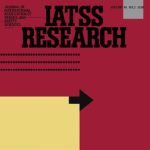
A paper titled “Which factors lead to driving errors? A structural equation model analysis through a driving simulator experiment” authored by Panagiotis Papantoniou, George Yannis and Eleni Christofa is published in Journal of IATSS. Data were obtained from a driving simulation experiment in which 95 participants covering all ages were asked to drive under different types of distraction (no distraction, conversation with passenger, cell phone use) in rural and urban road environment, as well as in both low and high traffic conditions. Structural Equation Models were developed and the driving error was modeled as a latent variable based on several individual driving simulator parameters. The results of this complex model reveal that the impact of driver characteristics and area type are the only statistically significant factors affecting the probability of driving errors. Interestingly, neither conversing with a passenger nor talking on the cell phone have a statistically significant impact on driving error behaviour which highlights the importance of the present analysis and more specifically the development of a measure that represents overall driving error behaviour instead of individual driving errors variables. ![]()

Basic characteristics of road fatalities in Greece for the period 1991-2018 are summarised in a comprehensive Table prepared by the NTUA Road Safety Observatory (data source: ELSTAT). Since 2008, there are approximately 850 less road fatalities per year in Greece. According to these time series data a spectacular decrease in road fatalities for children 0-14 years old (-71%), young drivers (-68%) and outside built-up areas (-59%) is observed during the last decade. On the contrary, fatalities decrease during the last decade is quite limited (but important) for older drivers (-22%), moped riders (-34%), and at junctions inside built-up areas (-35%). ![]()

ESRA2 (E-Survey of Road Users’ Attitudes) project with the active contribution of NTUA is organising six on-line webinars under the theme “Measuring Global Traffic Safety Cultures to Support Effective Road Safety Policy Development” started in September 2020. The Webinar topics concern: Enforcement and traffic violations – Seat belt & Child restraint systems – Senior road users – Support for policy measures – Pedestrians – Cyclists – Moped drivers and Motorcyclists (16 December 2020 by NTUA) – Gender Issues – Young road users – Subjective safety and risk perception – Vehicle automation. ![]() Registration is open.
Registration is open. ![]()
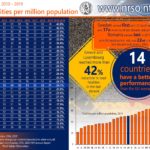
According to the EU road fatalities infographic of the NTUA Road Safety Observatory based on ETSC 2020 PIN Annual Report data, Sweden ranked first in 2019 with 22 fatalities/mil. inhabitants and 17th in terms of last decade reduction (-21%), whereas Romania ranked last, with 96 fatalities/mil. inhabitants and 22nd in terms of last decade reduction (-18%). 14 countries have a better performance than the EU average in terms of last decade road fatalities reduction, with Luxembourg and Greece sitting on top of the list with a reduction of more than 42% over the last decade. ![]()
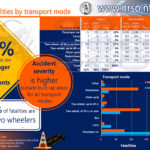
According to the ELSTAT road accidents data for 2018 in Greece, 38% of road fatalities are passenger car occupants, whereas 31% of road fatalities are power two wheelers. Most car occupant fatalities occur outside built-up areas while most motorcycle and pedestrian fatalities occur inside built-up areas. Accident severity is five times higher outside built-up areas for all transport modes. ![]()
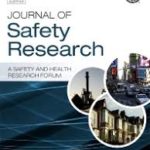
A paper titled “A critical overview of driver recording tools” authored by Apostolis Ziakopoulos, Dimitris Tselentis, Armira Kontaxi and George Yannis, is now published in Journal of Safety Research. The objective of this review paper is to present and comparatively assess the various driver recording tools that researchers have at their disposal. A critical synthesis of the results was conducted, providing the advantages and disadvantages of utilizing each tool and including additional knowledge regarding ease of experimental implementation, data handling issues, impacts on subsequent analyses, as well as the respective cost parameters. New technologies provide undeniably powerful tools that allow for seamless data handling, storage, and analysis, such as smartphones and in-vehicle data recorders. However, this sometimes comes at considerable costs (which may or may not pay off at a later stage), while legacy driver recording methods still have their own niches to fill in research. ![]()

The new emblematic sustainable urban mobility arrangements within the Athens Great Walk project were presented by NTUA Professor George Yannis at the Athens City Council on May 11, 2020, which unanimously accepted the breakthrough and brave choices of Mayor Kostas Bakoyannis for extended regain of urban public space, public transport in priority, and safe and efficient mobility of pedestrians and cyclists. ![]()
![]()
![]()
![]()
![]()
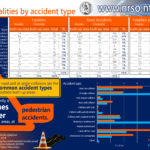
According to ELSTAT final road crash data for 2018, come off the road and at angle collisions are the two most common crash types outside built-up areas. Pedestrian accidents, at angle collisions, come off the road and collisions with stopped vehicle are the most common crashes types inside built-up areas. Crash severity is more than 4 times higher outside built-up areas at pedestrian accidents. ![]()

The Transport Research Arena Conference (TRA 2020) organised by the European Commisison and the European transport research platforms (ACARE, ALICE, CEDR, ECTP, ERRAC, ERTRAC, ETRA, Waterborne), was scheduled to take place in Helsinki, Finland from 26-30th April 2020, themed “Rethinking transport – towards clean and inclusive mobility”. The conference was cancelled, though, due to the corona virus crisis. ![]() Nevertheless, all scientific papers are scheduled to be published at the Conference Proceedings. NTUA’s TRA conference papers (full paper + presentation) are listed below:
Nevertheless, all scientific papers are scheduled to be published at the Conference Proceedings. NTUA’s TRA conference papers (full paper + presentation) are listed below:

 Investigation of traffic and safety behaviour of pedestrians texting or web-surfing
Investigation of traffic and safety behaviour of pedestrians texting or web-surfing
 Analysis of the impact of nighttime driving to drivers’ behavior in rural roads through a driving simulator experiment
Analysis of the impact of nighttime driving to drivers’ behavior in rural roads through a driving simulator experiment
 Investigation of the impact of weather conditions to young drivers’ behaviour and safety in cities
Investigation of the impact of weather conditions to young drivers’ behaviour and safety in cities
 Spatial analysis of driver safety behaviour using data from smartphones
Spatial analysis of driver safety behaviour using data from smartphones
 Modelling the economic impacts of road crashes in Greece
Modelling the economic impacts of road crashes in Greece
 Elderly drivers with brain disorders: Is their driving behavior the same before and after an unexpected incident?
Elderly drivers with brain disorders: Is their driving behavior the same before and after an unexpected incident?
 Exploring the Establishment of a European Transport Research Cloud
Exploring the Establishment of a European Transport Research Cloud
 Clash of cultures in Greek traffic? What happens when a Southern European road safety culture is mixed with a Northern European road safety culture?
Clash of cultures in Greek traffic? What happens when a Southern European road safety culture is mixed with a Northern European road safety culture?
 Road user safety attitudes towards driver fatigue
Road user safety attitudes towards driver fatigue
 Cycling under the influence of alcohol and drugs: current situation and risks
Cycling under the influence of alcohol and drugs: current situation and risks
 Identification of Road Safety Risk Factors in Africa
Identification of Road Safety Risk Factors in Africa
 Road Safety Modelling: Macroscopic and Microscopic Approach
Road Safety Modelling: Macroscopic and Microscopic Approach
 Development of a Platform for Global Road Safety Data Analysis
Development of a Platform for Global Road Safety Data Analysis
 Advanced driver monitoring using smartphone applications: The BeSmart project
Advanced driver monitoring using smartphone applications: The BeSmart project
 Driver feedback during naturalistic driving experiments: A review of types, methods and future challenges
Driver feedback during naturalistic driving experiments: A review of types, methods and future challenges
 Towards behavioral models for autonomous driving acceptance
Towards behavioral models for autonomous driving acceptance i-DREAMS: an Intelligent Driver and Road Environment Assessment and Monitoring System
i-DREAMS: an Intelligent Driver and Road Environment Assessment and Monitoring System
 State of the art on measuring driver state and technology-based risk prevention and mitigation: Findings from the i-DREAMS project
State of the art on measuring driver state and technology-based risk prevention and mitigation: Findings from the i-DREAMS project
 Developing a Policy Support Tool for Connected and Automated Transport Systems
Developing a Policy Support Tool for Connected and Automated Transport Systems
 A Review on Societal Impacts of the Future Connected and Automated Transport Systems
A Review on Societal Impacts of the Future Connected and Automated Transport Systems

Road Traffic Accidents is a Pandemic comparable to Covid-19 Pandemic
Covid-19 is a major pandemic with large number of victims (165.000 fatalities at mid-April 2020), which can be compared to the road traffic accidents pandemic (1,35 million fatalities and 50 million injuries per year globally). However, road traffic accidents pandemic has never being seeing by the global population and the Governments as such a serious health problem and traffic safety measures have never being considered so seriously and massively by the Governments neither accepted by the people, as with Covid-19 pandemic measures.
The effectiveness of Covid-19 pandemic massive measures for controlling the spread of the disease can be an excellent example for the need of more serious and massive measures on traffic accidents pandemic. Whereas road infrastructure safety improvement and safer vehicles penetration require several years before witnessing major results, traffic behaviour can certainly be controlled and improved much faster, if social acceptance is raised and political will is strong and sincere. Especially, managing efficiently (by police enforcement and massive campaigns) the five major traffic killers (speeding, mobile-phone-use, drink-and-drive, seat belt and helmet non-use) can be proved highly beneficial with a great number of lives saved even at short term.
Road traffic safety is highly critical during the Covid-19 pandemic period
During the traffic lockdown due to the Covid-19 pandemic, the number of road traffic casualties decreased significantly, mainly due to the dramatic traffic decrease ). However, first studies demonstrated that less traffic led to higher speeds and in some cases more casualties per traffic.
It is highly important that the burden of the health system during the Covid-19 pandemic period must not be further overloaded by the traffic safety casualties and efficient traffic safety measures should be taken as soon as possible. Especially, during the critical period of gradual removal of the lockdown measures, traffic accidents must not be increased again. These new traffic safety measures must be included in the Covid-19 measures package for the period after the lockdown. Focus should be given to the major traffic killers (speeding being the most important) and to measures bringing results quickly. For example, these measures could concern:
- New speed limits applying to all roads horizontally (with important benefits also for the environment):
- 30 km/h in urban areas (50 km/h in major urban axes)
- 50 km/h at rural roads
- 80 km/h at major interurban roads
- 100 km/h on motorways
- Speeding enforcement should be massively implemented through cameras (always on) and fines massive processing should be efficiently upgraded if necessary with new legislation urgently put in place.
- Intensification of enforcement of mobile-phone use and non-use of seat belts and helmets, eventually with any other Covid-19 related traffic controls.
- Implementation of massive campaigns (within those for the Covid-19) raising public awareness on speeding and the other major traffic accidents factors.
It would be ideal for the global public health, if these measures intensification should remain also after the Covid-19 crisis with tremendous benefits for traffic safety.
We should stop going blind on road traffic safety policies – we need appropriate data
Pandemic data proved being highly critical in early prognosis and mitigation during the different phases of the Covid-19 crisis. The contribution of the international scientific pandemics community proved catalytic in analyzing quickly large sets of data in time-series, international comparisons and measures effectiveness, providing decision makers strong scientific evidence for the necessary mitigation measures. Appropriate data analysis remains a critical pillar for containing the Covid-19 crisis.
On the contrary, the road traffic accidents pandemic lacks fundamental data and corresponding analyses to support the necessary traffic safety decisions. Crash data are fully unreliable in more than half of the countries in the world (including most Low and Middle Income Countries and several Emerging Economies). Traffic data necessary to combine with crash data in order to judge the size of the phenomenon are also blatantly missing. And most importantly, reliable data and performance indicators on key traffic accident factors, like speeding, mobile-phone use, drinking-and-driving, are simply not available (with exception in very few developed countries) and any evaluation of traffic safety measures effectiveness will always be largely piecemeal and with limited transferability in other places in the world. Successful technological solutions raised during the Covid-19 crisis can easily be also exploited for the necessary traffic safety data collection and analysis.
In short, today in road safety we work mostly in blind, as we have very little knowledge for the size and the root causes of the traffic accidents pandemic and consequently no appropriate policies, programmes and measures can be designed and implemented. Both the Authorities and the road users (drivers, passengers, pedestrians) underestimate largely the road traffic risk and the role of speed, of distraction, of alcohol, of fatigue, with major consequence that today road traffic safety measures are largely under-designed and even less accepted by the population.
In conclusion
Covid-19 pandemic is a great opportunity for more serious work for the road accidents pandemic. Serious work, adequate effort and budgets, major public acceptance proved bringing good results which nobody would thought could be possible before the Covid-19 crisis. Let’s recognize that traffic accidents are also a global pandemic and start devoting the effort, resources, budget and data deserved for such a major global health problem.
We need safer road traffic and no accidents during and after the Covid-19 pandemic and perhaps the Covid-19 crisis can be the trigger also for a new and serious behaviour of the Authorities and the citizens for safer roads for all, everywhere in the world.
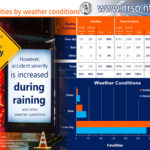
According to ELSTAT data for 2018, the majority of road accidents and fatalities in Greece occur during clear sky, both inside and outside built-up area. However, both road accidents and fatalities share outside built-up areas is much higher during rainy conditions than normal conditions of clear sky. Furthermore, accident severity is increased by almost 50% during raining. ![]()
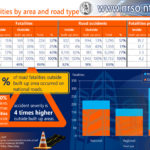
According to the Hellenic Statistical Authority ELSTAT data, among the 700 persons killed in Greece in 2018: 333 were outside built-up areas and 367 were inside built-up areas. 51% of road fatalities outside built-up area occurred on national roads. More than 80% of road accidents and half of fatalities occurred inside built-up areas. However, accident severity is 4 times higher outside built-up areas in total. ![]()
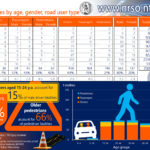
According to Hellenic Statistical Authority (ELSTAT) data, 700 persons were killed in Greece in 2018: 450 drivers, 104 passengers and 146 pedestrians. Male drivers account for 60% of all road fatalities in Greece. Young male drivers aged 15-24 years old account for 15% of all male driver fatalities and older people account for more than 66% of all pedestrian fatalities. The higher accident severity was found in accidents involving older persons (7.5 fatalities per 100 accidents) and young people 15-24 years old (3.3 fatalities per 100 accidents). ![]()
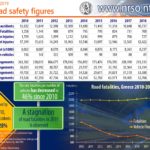
The impressive decrease in road fatality figures in Greece of the last decade paused this year (2019), according to recently published ELSTAT provisional data. Compared to 2018 figures, in 2019 there has been no improvement in fatalities. However, during the last decade, Greece presents the most impressive road safety improvement in the European Union, with a decrease of road fatalities of 44% and a decrease of serious injuries of 63%. The rate fatalities per million vehicles has decreased by 44% since 2010. It is noted that 2019 and 2015, two election years in Greece, together with 2016, were the only years since 2004 without significant decrease of road fatalities. ![]()
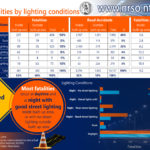
According to the latest ELSTAT data for 2018, most road fatalities in Greece occur at daytime and at night with good street lighting inside built-up area, or with no street lighting outside built-up area. Accident severity is increased 3 to 5 times more at night with no street lighting, but also at night accidents outside built-up areas. ![]()

The 3rd Global High-Level Conference on Road Safety took place with great success on 19–20 February 2020, in Stockholm, Sweden marking the conclusion of the UN Decade of Action for Road Safety coordinated by the World Health Organisation (WHO). More than 1,700 participants from around 140 countries discussed extensively how the global targets for road safety can be developed, not the least in relation to the already existing goals for road safety in the 2030 Agenda.![]() During the Conference, the Stockholm Declaration focusing on global road safety efforts up to 2030 was presented,
During the Conference, the Stockholm Declaration focusing on global road safety efforts up to 2030 was presented,![]() together with the recommendations from the Academic Experts Group.
together with the recommendations from the Academic Experts Group. ![]()
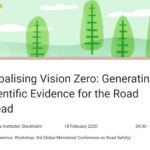
The ICoRSI International Symposium on Safety of Vulnerable Road Users co-sponsored a Workshop on “Globalising Vision Zero: Generating Scientific Evidence for the Road Ahead” on 18th February 2020 in Stockholm (A Pre-Conference event on the occasion of the 3rd Global Ministerial Conference on Road Safety). At this event ICoRSI in association with Campbell Collaboration presented for discussion an Evidence and Gap Map for road safety interventions worldwide. This work enabled future research and discussions to be based on approaches and interventions which science shows can be effective in different parts of the world. ![]()
![]()
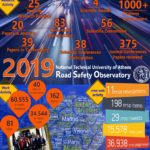
The infographic of the 2019 NTUA Road Safety Observatory (www.nrso.ntua.gr) highlights one more very intensive year, striving with highly scientific expertise to improve road safety in Greece, in Europe and worldwide. The nrso team with excellent dedication, efficiency and expertise were active in 25 innovative research projects, succeeded to publish 59 scientific papers (20 in peer reviewed journals), and traveled at 40 cities in 4 continents to develop and promote their research, proud also for the two Prince Michael Awards (SafetyCube and SaferAfrica). In the new decade, we are even more committed to our scientific quest for safer roads everywhere and for all. ![]()
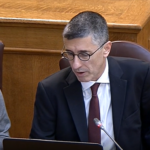
NTUA Professor George Yannis made an invited lecture at the Permanent Road Safety Committee of the Hellenic Parliament on “European Road Safety Policy and Good Practices Worldwide” on February 6th, 2020. He stressed the importance for measures on priority risk factors (speed, alcohol, distraction, seat belt, helmet) and serious road safety capacity-building with appropriate evidence-based policy making. ![]()
![]()
![]()

The Greek Ministry of Development and Investment organised with great success the National Conference on Growth for the Partnership Agreement 2021-2027, which was held in Athens on 17 January 2020. The Conference for the upcoming period 2021 – 2027 marks the official launch of the dialogue of all productive forces, social and scientific bodies and policy makers. The aim is to formulate strategic choices at National and Regional level for all the critical development and socio-economic issues of the new period 2021-2027. Transport and road safety were key components of the discussions. ![]()
![]() NTUA Professor George Yannis contributed actively with the following presentation: Critical challenges for a Sustainable National Transportation System
NTUA Professor George Yannis contributed actively with the following presentation: Critical challenges for a Sustainable National Transportation System ![]()
![]()

The Greek Ministry of Infrastructure and Transport in cooperation with the partners of the European program CIVITAS SUMPs-UP organized with great success a two-day event on 16 and 17 January 2020 on Sustainable Urban Mobility Plans (SUMP), in Athens. The purpose of the event was to provide support for the development of sustainable cities and to ensure accessibility for pedestrians, bike users and all citizens. Road safety was a key component of the urban mobility discussions. NTUA actively contributed with the following presentation: Road Safety Measures for Sustainable Urban Mobility Plans ![]()
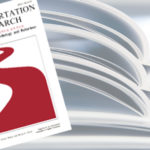
A paper titled “Safety culture among bus drivers in Norway and Greece” authored by Tor-Olav Nævestad, Ross O. Phillips, Alexandra Laiou, Torkel Bjørnskau, and George Yannis is now published in Transportation Research Part F: Traffic Psychology and Behaviour. The aims of this paper are to: (1) Examine the influence of national safety culture, sector safety focus and organizational safety culture on the safety behaviours of professional drivers, compared with other explanatory variables (e.g. age, type of transport, working conditions), and to (2) Examine the influence of safety behaviours and other factors (e.g. age, mileage, type of transport) on self-reported crash involvement. The study indicates a relationship between national road safety culture, road safety behaviour and crash involvement, that could be developed further to help explain differences in national road safety records. ![]()

The 5th Conference on Intelligent Transportation Systems and related developments in Greece, which is organised by the “Hellenic Association for the deployment of Intelligent Transport Systems – ITS Hellas, took place with great success on 17 & 18 December 2019 at the Hellenic Ministry of Infrastructure and Transport, Athens, Greece. The conference focused on the broad deployment of Intelligent Transport Systems (ITS) as a tool to achieve economic growth and prosperity and ensure the effectiveness, efficiency and safety of transport for the benefit of the respective industry, the end-users and the environment. During this important for the Hellenic transport sector event, prominent Greek and foreign speakers thoroughly discussed and presented a number of key-topics, through several sessions and a number of Round-Table discussions. ![]() NTUA actively contributed with the following presentation:
NTUA actively contributed with the following presentation: ![]() i-Dreams – Enhancing drivers safety by monitoring the behaviour through smartphones
i-Dreams – Enhancing drivers safety by monitoring the behaviour through smartphones

SaferAfrica Project has been awarded the prestigious Prince Michael International Road Safety Award 2019 as recognition for establishing a Dialogue Platform between Africa and Europe focusing on road safety management. SaferAfrica was an EU Horizons 2020 research project (2016-2019) relying on a rich and multilevel governance inspired by a common goal: make African roads safer. NTUA contributed actively by developing the African Road Safety Observatory as a core component of the Dialogue Platform. ![]()
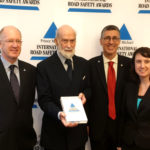
SafetyCube project has been awarded the prestigious Prince Michael International Road Safety Award 2019 as recognition for its innovative open-access web-based Road Safety Decision Support System (DSS) that enables policy-makers and stakeholders to select and implement the most appropriate strategies, measures and cost-effective approaches to reduce casualties of all road user types and all severities in Europe and worldwide. SafetyCube (Safety CaUsation, Benefits and Efficiency) was an EU Horizon 2020 research project (2015-2018). NTUA contributed actively at all phases of the SafetyCube project and was in charge of the development of the SafetyCube DSS. ![]()

At a press conference organized by «Fondation VINCI AUTOROUTES» for Responsible Driving that took place with great success in Athens on 28 November 2019, the results of the “Euro-barometer for responsible driving” survey were presented, that took place in 12 European countries. It is the second year that Greece is included in the survey. The major risks for road safety in Greece according to the survey are drowsiness and inattention during driving. ![]()














































































































































































